-
Student aero-design competition to be held next week
The Aero Design competition, to be held at the end of the month, is intended to provide undergraduate and graduate engineering students with a real-life engineering challenge; the organizers say the competition has been designed to provide exposure to the kinds of situations that engineers face in their real-life work environment; students will find themselves performing trade studies and making compromises to arrive at a design solution that will optimally meet the mission requirements while still conforming to the configuration limitations
-
-
Researchers develop paper that is stronger than steel
Work by Australian researchers is a step forward in the development of a material that has the potential to revolutionize the automotive, aviation, electrical, and optical industries; the composite material based on graphite that is a thin as paper and ten times stronger than steel
-
-
Past experience shows that Earth can recover from global warming
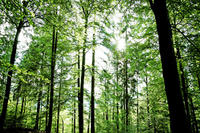
When faced with high levels of atmospheric carbon dioxide and rising temperatures fifty-six million years ago, the Earth increased its ability to pull carbon from the air;this led to a recovery that was quicker than anticipated by many models of the carbon cycle — though still on the order of tens of thousands of years, a new study finds; researchers found that more than half of the added carbon dioxide was pulled from the atmosphere within 30,000 to 40,000 years, which is one-third of the time span previously thought
-
-
Bill prohibits joint U.S.-China scientific activity
Language inserted into the 2011 spending bill would prohibit any joint scientific activity between the United States and China that involves NASA or is coordinated by the White House Office of Science and Technology Policy (OSTP); Rep. Frank Wolf (R-Virginia), the author of the prohibition, says: “China is spying against us, and every U.S. government agency has been hit by cyberattacks —- They are stealing technology from every major U.S. company. They have taken technology from NASA, and they have hit the NSF computers. —- You name the company, and the Chinese are trying to get its secrets”
-
-
U.S. Air Force wants mind reading aerial drones
The U.S. Air Force is currently working with several firms to develop aerial drones that have the ability to think and anticipate a controller’s actions before it occurs; the Air Force began exploring this capability in order to avoid collisions during takeoff and landings at busy airport terminals where both manned and unmanned planes launch; to address this problem, the Air Force awarded contracts to several firms to develop predictive software that can anticipate a pilot’s reaction if a drone is flying too closely
-
-
Bird-like visual sense to help UAVs navigate in urban environments
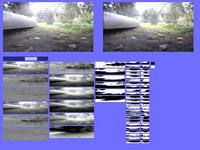
The U.S. Office of Naval Research (ONR) has awarded researchers $4.5 million to develop a bird-sized, self-flying plane that could navigate through both forests and urban environments; the plane would be about the size of a crow, and, like a bird, would use vision to navigate, but it would use orientable propellers and not flap its wings; the drone will rely, in part, on a technology that emulates the visual system of animals called Convolutional Networks, which mimics the neural network in the mammalian visual cortex and can be trained quickly to interpret the world around it
-
-
Space technology of practical uses on Earth
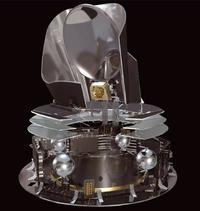
Terahertz technology developed for space missions to study the most distant objects in the universe is now finding a host of practical applications back on Earth; most clothing and packaging materials are transparent to Terahertz radiation, whereas skin, water, metal and a host of other interesting materials are not; this gives rise to some important day-to-day applications: detecting weapons concealed under clothing or inside parcels; distinguishing skin and breast cancer tissue; quality control of manufactures items and processes in factories
-
-
Rorschach test for terrorists
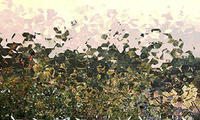
DHS wanted to test a Russian mind-reading technology which worked, more or less, like a Rorschach test for terrorists; developers of the method insisted that the technique was sound and objective; it is not clear what happened with the research work and whether or not it has yielded any practical results; neither the agency nor the institute contracted to do the work issued follow-up information
-
-
Army spends $50M for translation app that is already available

This year the Pentagon has set aside nearly $50 million for the development of a sophisticated smartphone translation app that would allow troops in Afghanistan to translate Pastho and Dari; but some troops have already begun using the SpeechTrans app to translate Arabic which can be downloaded on any iPhone or iPad for less than $20, and the New Jersey based company is hard at work on an Afghan language edition of its app; one defense analyst questions the need to spend millions on research when “good enough” technology is already available, especially in light of congressional efforts to cut the deficit
-
-
Understanding crowd behavior in disasters
Researchers have developed a new model for the behavior of pedestrians and crowds; most simulation software is often based on physics-inspired assumptions, such as repulsive forces between pedestrians; the new, psychologically based model, in contrast, assumes that pedestrians try to minimize the coverage of their vision field, while adjusting the walking speed to keep a safety distance from other people; the new approach can help in understanding and preventing tragic crowd disasters, developing better architectural designs and new navigation approaches in robotics
-
-
New rifle sighting system dramatically improves accuracy
Crosshairs automatically adjust for conditions in real time; a fiber-optic laser-based sensor system automatically corrects for even tiny barrel disruptions; the system, developed at Oak Ridge National Laboratory’s (ORNL), precisely measures the deflection of the barrel relative to the sight and then electronically makes the necessary corrections; the new sensor is 250 times better than that of traditional crosshairs, which can be manually adjusted by one-fourth minutes of angle; the ORNL sensor can sense angular displacement and shift the reticle (crosshairs) by 1/1,000th of a minute of angle
-
-
Brazilian police get biometric "Robocop" glasses
Facial-recognition glasses have been deployed by Brazilian police ahead of the 2014 World Cup soccer tournament; the system can scan and compare four hundred faces per second using 46,000 biometric points for comparison; the technology will be tested at public events leading up to the World Cup
-
-
Computerized irrigation system saves money
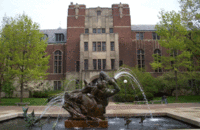
The University of Michigan is using a computerized irrigation system for its campus landscaping; the system uses information from a campus weather station that monitors wind speed, rain, temperature, and humidity to adjust irrigation schedules; the system allowed the school to reduce the amount of water used on irrigation by 22 million gallons of water on landscape irrigation each year — or 68 percent relative to the amount of water used before the system was installed — saving an estimated $141,000 a year
-
-
Dialing with your brain
Researchers have developed a device that allows individuals to make a cell phone call using only their mind; the gadget non-invasively analyzes an individual’s electrical activity in the brain and translates those pulses wirelessly to dial a cell phone; in trials, the system was able to achieve 100 percent accuracy in the majority of test subjects after a brief period of training; researchers originally designed the system to help severely disabled people, but believe that it has a broad range of applications
-
-
70-kg plane available for $39,000
A Finnish company is offering a personal plane for about $39,000; the plane weighs only seventy kilograms; wingspan is nearly five meters, nose to tail 3.5 meters, and height 1.3 meters. maximum take-off weight is 200 kilograms; speed range is 70-140 km/h with a service ceiling of three kilometers
-
More headlines
The long view
A Shining Star in a Contentious Legacy: Could Marty Makary Be the Saving Grace of a Divisive Presidency?
While much of the Trump administration has sparked controversy, the FDA’s consumer-first reforms may be remembered as its brightest legacy. From AI-driven drug reviews to bans on artificial dyes, the FDA’s agenda resonates with the public in ways few Trump-era policies have.
Risk Assessment with Machine Learning
Researchers utilize geological survey data and machine learning algorithms for accurately predicting liquefaction risk in earthquake-prone areas.
Foundation for U.S. Breakthroughs Feels Shakier to Researchers
With each dollar of its grants, the National Institutes of Health —the world’s largest funder of biomedical research —generates, on average, $2.56 worth of economic activity across all 50 states. NIH grants also support more than 400,000 U.S. jobs, and have been a central force in establishing the country’s dominance in medical research. Waves of funding cuts and grant terminations under the second Trump administration are a threat to the U.S. status as driver of scientific progress, and to the nation’s economy.
The True Cost of Abandoning Science
“We now face a choice: to remain at the vanguard of scientific inquiry through sound investment, or to cede our leadership and watch others answer the big questions that have confounded humanity for millennia —and reap the rewards.”
Bookshelf: Smartphones Shape War in Hyperconnected World
The smartphone is helping to shape the conduct and representation of contemporary war. A new book argues that as an operative device, the smartphone is now “being used as a central weapon of war.”
New Approach Detects Adversarial Attacks in Multimodal AI Systems
New vulnerabilities have emerged with the rapid advancement and adoption of multimodal foundational AI models, significantly expanding the potential for cybersecurity attacks. Topological signatures key to revealing attacks, identifying origins of threats.
